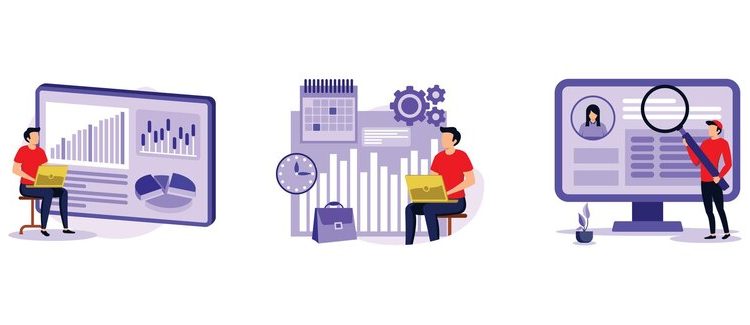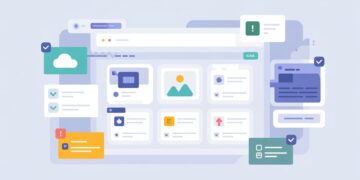It’s no secret that choosing the right HR software system is a daunting task. With so many options on the market, it’s hard to know which one is right for your company. But don’t worry, we’re here to help. In this blog post, we’ll give you some tips on how to choose an HR software system in 2022. We’ll also provide some insights on the latest trends in HR software systems. So whether you’re a small business owner or a large corporation, we’ve got you covered.
Introduction
The human resources (HR) department is one of the most important in any company. It’s responsible for hiring, managing employee records, benefits, and payroll.
With the advent of technology, there are now many software systems available to help businesses with these HR functions. Choosing the right HR software system is a big decision that can have a major impact on a company’s bottom line.
There are a few things to keep in mind when choosing an HR software system. First, you’ll need to decide what features you need and what your budget is. There are many free and open-source options available, as well as expensive enterprise solutions. Second, you’ll need to make sure the system is compatible with your company’s existing infrastructure. And finally, you’ll want to choose a system that is easy to use and has good customer support.
To help you make the best decision for your company, we’ve put together this guide on how to choose an HR software system in 2022.
Defining Your Needs
The first step in choosing an HR software system is to define your needs. What features are you looking for? What type of system do you need?
There are two main types of HR systems: on-premise and cloud-based. On-premise systems are installed on your own servers, while cloud-based systems are hosted by the vendor.
On-premise systems may be a good choice if you have the IT resources to manage and maintain the system, and if you prefer to keep your data onsite. Cloud-based systems may be a better choice if you don’t have the resources to manage an on-premise system, or if you prefer the convenience of having your data managed by the vendor.
Once you’ve decided which type of system you need, you can start narrowing down your options by considering features. Here are some common features to look for:
- Time and attendance tracking
- Leave management
- Benefits administration
- Performance management
- Compensation management
- Talent management
Researching Your Options
With so many different HR software systems on the market, it can be difficult to know where to start your research. When you’re looking for an HR system for your business, there are a few key factors to keep in mind.
First, you need to consider the size of your company and the number of employees you have. If you have a small business with fewer than 50 employees, you may not need all the bells and whistles that come with a larger system. But if you have a medium-sized or large company, you’ll need an HR system that can handle a larger database and more complex needs.
Second, you need to think about your company’s budget. HR systems can range in price from a few hundred dollars per month to several thousand dollars per month. It’s important to find a system that fits within your budget and offers the features you need.
Third, you need to consider what features are most important to your company. Do you need features like time tracking, performance reviews, or employee self-service? Make sure the HR system you choose has the features that are most important to you.
Finally, you should ask yourself whether you want an on-premises or cloud-based HR system. On-premises systems are installed on your company’s servers, while cloud-based systems are hosted by the vendor (like Google or Microsoft). Cloud-based systems tend to be more expensive, but they offer the advantage of being able to access your data from anywhere.
Keep these factors in mind as you begin your research into HR software systems. By taking the time to find the right system for your company, you can save yourself a lot of time and hassle down the road.
Evaluating HR Software Systems
When you’re evaluating HR software systems, it’s important to keep in mind that no two businesses are alike. There is no one-size-fits-all solution when it comes to choosing an HR software system. However, there are some key factors you should always consider when making your decision.
In this guide, we’ll cover:
- The different types of HR software systems
- What to look for in an HR software system
- How to evaluate HR software systems
By the end of this guide, you should have a good understanding of the different types of HR software systems and how to evaluate them.
Making Your Decision
Now that you have a handle on the different types of HR software available and what they can do for your business, it’s time to start narrowing down your options. The first step is to create a list of must-haves and nice-to-haves.
Must-haves are features that are absolutely essential for your business, such as payroll processing or performance management. Nice-to-haves are features that would be beneficial but are not essential, such as attendance tracking or employee self-service.
Once you have your list, you can start evaluating different HR software systems. Many vendors offer free trials, so take advantage of them! This is the best way to get a feel for how the system works and see if it’s a good fit for your company.
When evaluating HR software, it’s important to keep in mind that not all systems are created equal. Some vendors offer more comprehensive solutions than others, so be sure to compare apples to apples when making your decision.
Finally, don’t forget to involve your employees in the selection process. After all, they’ll be the ones using the system on a daily basis! Ask them what features are most important to them and get their feedback on the systems you’re considering.
Making an informed decision about HR software can be daunting, but if you take the time to do your research and involve all stakeholders in the process, you’re sure to find a system that meets your needs and budget.
Implementing Your HR Software System
Once you’ve chosen your HR software system, it’s time to implement it across your organization. To do this, you’ll need to:
1. Train all employees on how to use the system.
2. Work with your IT department to ensure that the system is compatible with your organization’s existing technology infrastructure.
3. Create a plan for data migration, if necessary.
4. Test the system thoroughly before rolling it out to all employees.
5. Develop a communication strategy to let employees know about the new system and how it will benefit them.
6. launch the system and monitor its performance regularly.
Maintaining Your HR Software System
HR software systems are important for every business, but they are especially critical for businesses with a large workforce. A good HR system can help you keep track of employee records, time off, performance reviews, and much more.
However, it is important to remember that HR software systems need to be maintained in order to provide accurate and up-to-date information. Here are a few tips for maintaining your HR software system:
1. Keep your system updated: It is important to keep your HR software system up-to-date with the latest information. This includes updating employee records, performance reviews, and time off records. Doing this will help ensure that your system is providing accurate information.
2. Perform regular backups: It is also important to perform regular backups of your HR software system. This ensures that you will have a copy of the most recent data in case something happens to the original files.
3. Test your system regularly: Another important tip for maintaining your HR software system is to test it regularly. This helps to ensure that the system is working properly and that all of the data is accurate.
Conclusion
In conclusion, there are many factors to consider when choosing an HR software system. Be sure to do your research and ask lots of questions to find the best system for your needs. With so many options on the market, you’re sure to find a system that will streamline your HR processes and help you better manage your workforce.
Also Read: What Exactly Is Performance Management.
















